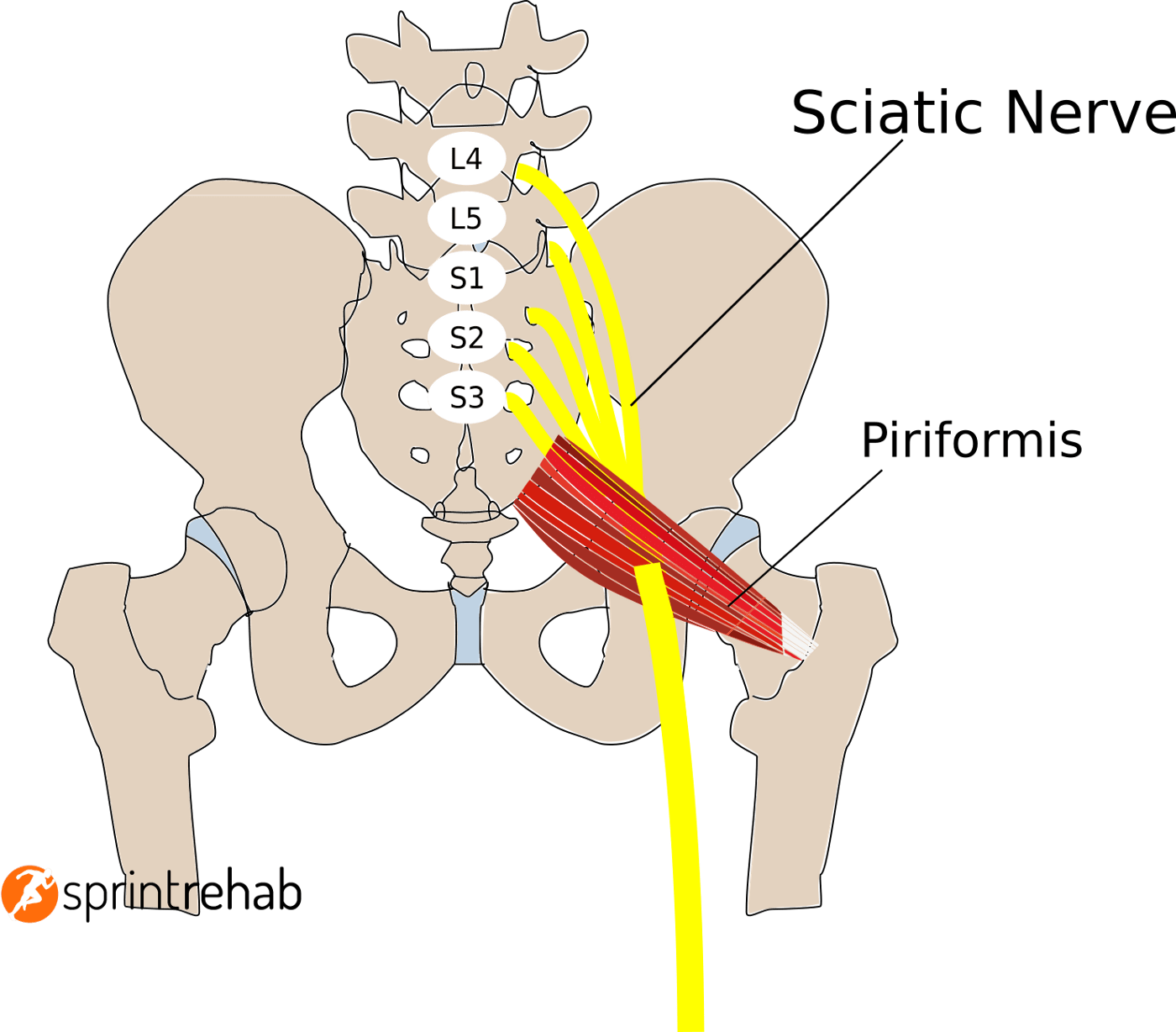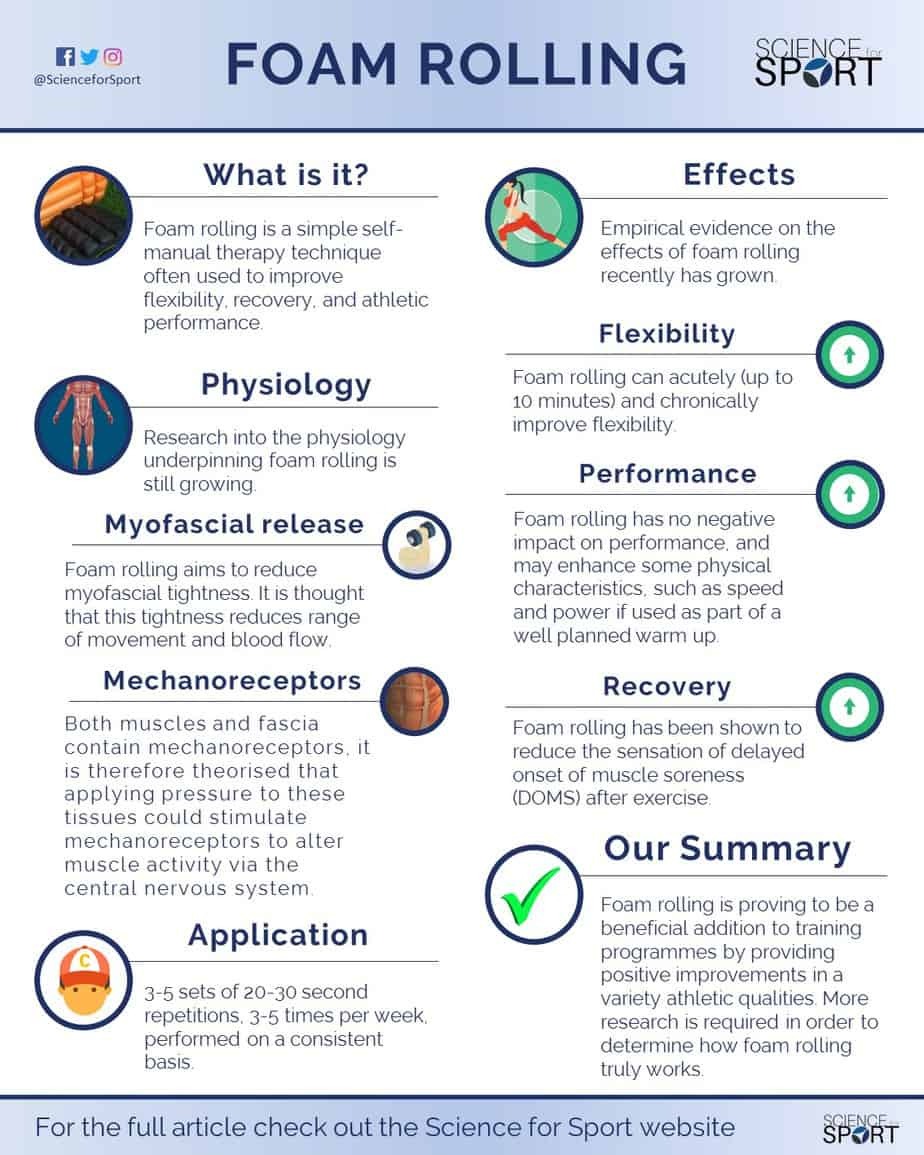
Despite the etiology of a dysfunctional piriformis, pain and muscle tenderness is a condition often associated with this deep hip muscle. If a muscle has trigger points, it will exhibit aberrant motor function, restricted range, pain and fatigue (Celik & Yeldan, 2011). Considering this information, proceeding directly to strength training and movement re-education might not yield optimal outcomes. Self-myofascial release (SMR) techniques have been shown to relax and lengthen muscle tissue in relatively short period of time (MacDonald, Button, Drinkwater, & Behm, 2014). Additionally, MacDonald et al. (2014) noted decreases in muscle soreness while increasing force production and muscle activation when implementing SMR techniques.

If we use SMR interventions first, it would stand to reason that the piriformis muscle will be more relaxed, pain free and receptive to external loading and movement correction. However, if we only relax and lengthen the muscle and negate movement re-education and strength training, the effects of SMR as a stand-alone modality might only serve as a temporary solution. This is because piriformis syndrome is also associated with poor hip stability, of which SMR alone might not solve completely (Tonley et al., 2010). Conversely, if movement correction is performed in the presence of a restricted and painful piriformis, the pain and trigger points may cause aberrant motor control and premature fatigue (Celik & Yeldan, 2011).

Evidence suggests that SMR and strength training / movement re-education of the piriformis and hip musculature are both effective. Both modalities have merit, measurable effects and appear to compliment each other. Until we find more evidence of each, and how they work together, I would suggest fusing these approaches to elicit and use the qualities of both.
References
Celik, D., & Yeldan, I. (2011). The relationship between latent triggerpointand musclestrength in healthy subjects: A double-blind study. Journal of Back and Musculoskeletal Rehabilitation. 24(4), 251-256.
The relationship between latent triggerpointand musclestrength in healthy subjects: A double-blind study
Johnson, W. (2014). Self-myofascial release: piriformis muscle. Retrieved February 13, 2014, from https://mycourses9.atsu.edu/webapps/portal/frameset.jsp?tab_tab_group_id=_2_1&url=%2Fwebapps%2Fblackboard%2Fexecute%2Flauncher%3Ftype%3DCourse%26id%3D_8740_1%26url%3D
MacDonald, G. Z., Button, D. C., Drinkwater, E. J., & Behm, D. G. (2014). Foamrollingas a recovery tool after an intense bout of physical activity. Medicine and Science in Sport and Exercise. 46(1), 131-142.
Foamrollingas a recovery tool after an intense bout of physical activity
Tonley, J., Yun, S., Kochevar, R., Dye, J., Farrokhi, S., & Powers, C. (2010). Treatment of an individual with piriformis syndrome focusing on hip muscle strengthening and movement reeducation: A case report. Journal of Orthopaedic & Sports Physical Therapy, 40 (2), 103-111.
Treatment of an individual with piriformis syndrome focusing on hip muscle strengthening and movement reeducation: A case report
-Michael McIsaac
